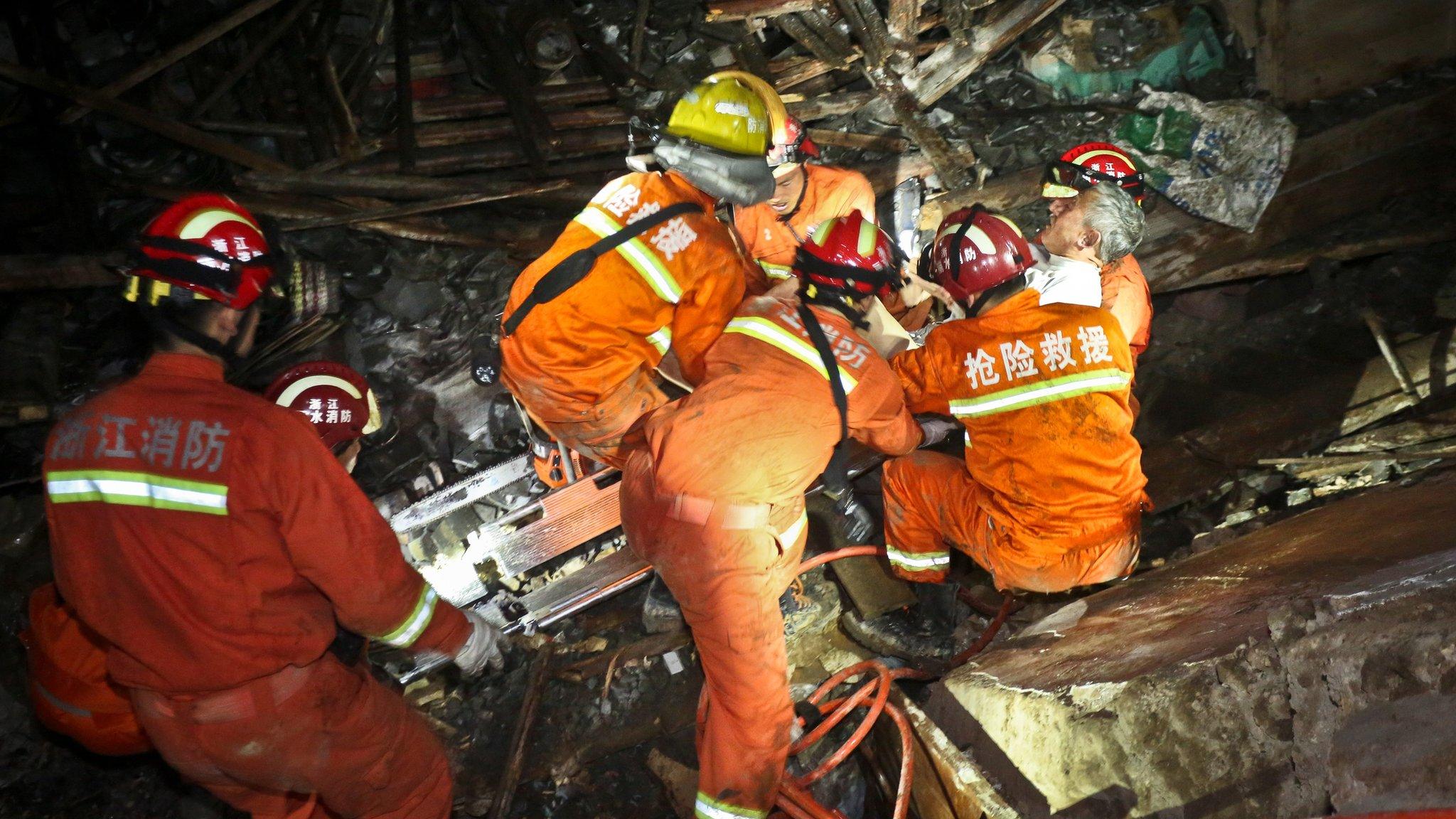China landslide: Man rescued alive in Shenzhen after 67 hours
- Published
The 19-year-old survivor has been named as Tian Zeming, a worker from Chongqing in south-western China
A man buried in rubble for almost three days after a landslide hit an area of the south Chinese city of Shenzhen has been pulled out alive.
The landslide, which struck early on Sunday, engulfed more than 30 buildings in an industrial district.
At least four bodies have been recovered so far. More than 70 people are still missing.
The landslide happened when a huge man-made mound of earth and construction waste collapsed after heavy rains.
The government has opened an official investigation into the incident, after it emerged that authorities had previously issued warnings about the mound.
The 19-year-old survivor was found around 04:00 local time on Wednesday (20:00 GMT Tuesday), after being buried for 67 hours. He has been named as Tian Zeming, a migrant worker from Chongqing in south-western China.
Officials say he was found in an extremely weak condition in an excavated hole under the building's roof. He was severely dehydrated and had a crushed leg. Rescuers took about two hours to safely pull him out.
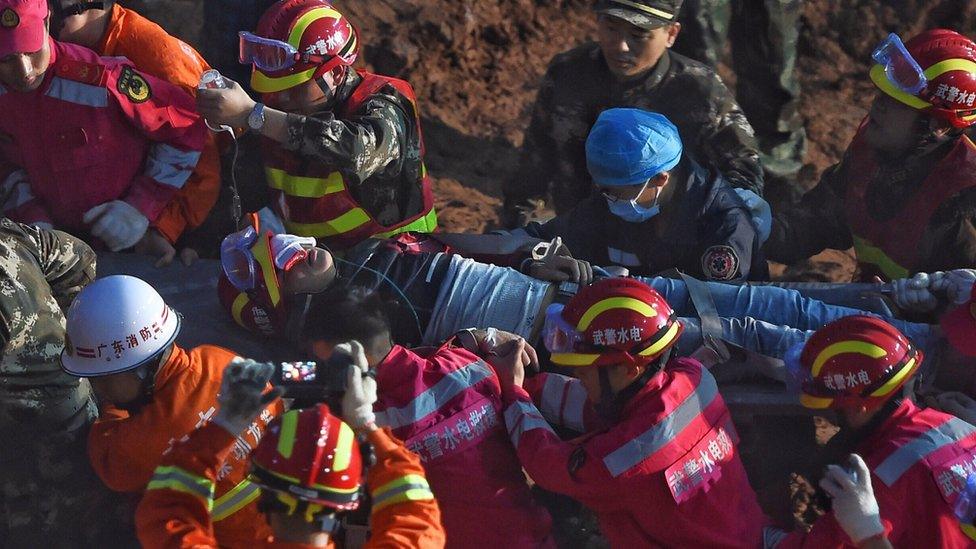
Thousands of people have been involved in the rescue efforts

Rescuers had dug a deep hole in the vast mound of earth to get to the man
During the rescue workers found a man's body nearby that showed no signs of life.
Zhang Hu, a city deputy mayor, said four bodies had so far been found and he pledged to continue with the search operation.
"As long as there is a sliver of hope, we will never give up," he said.
More than 5,000 people are involved in the rescue effort.
About 900 people were evacuated on Sunday as waves of soil and debris rolled across the district and sparked an explosion at a natural gas pipeline.
The landslide eventually blanketed an area of 380,000 sq m (455,000 sq yards) - the equivalent of about 50 football fields. Some areas were covered with up to 10m (32ft) of mud.
The number of missing has frequently been revised down, as people who were thought to be buried have been contacted or located by the authorities.

Read more about the Shenzhen landslide
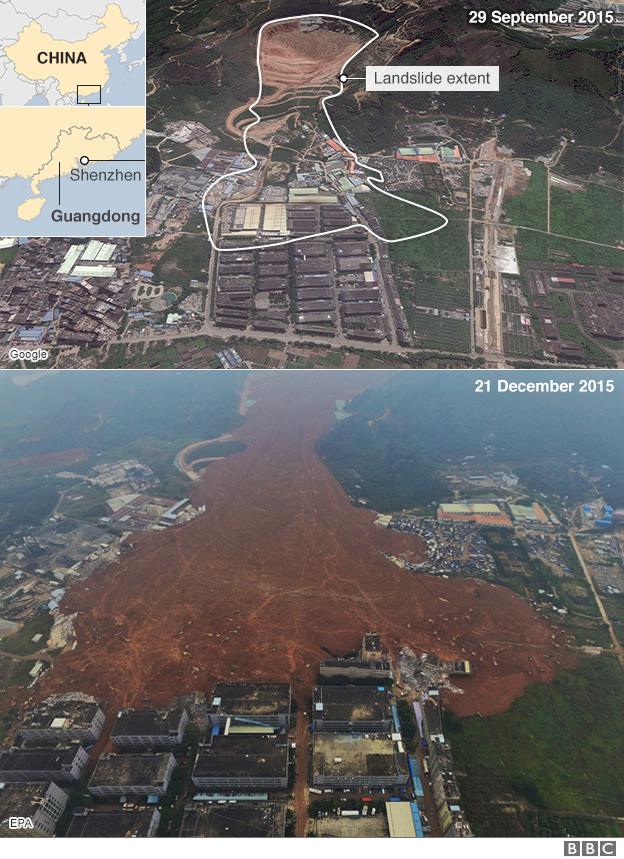

The ministry of land and resources said a mountain of earth and construction waste had piled up against a hill during the past two years.
"The pile was too big, the pile was too steep, leading to instability and collapse," the ministry said.
State media say a district government report in January warned of a "catastrophe" at the dump, which it said was made up of 1 million cubic metres of waste.
The 19-year-old man was buried when a huge pile of earth and construction waste engulfed an industrial estate
Local resident Yi Jimin agreed the disaster was not an act of nature.
"Heavy rains and a collapse of a mountain are natural disasters, but this wasn't a natural disaster, this was man-made,'' he said.
This is China's fourth major disaster in a year
A deadly stampede in Shanghai on New Year's Eve killed 36 people
A cruise ship capsized on the Yangtze river with nearly 400 deaths in June
Massive explosions at a chemicals warehouse in Tianjin in August killed more than 170 people
- Published21 December 2015

- Published22 December 2015

- Published29 January 2016
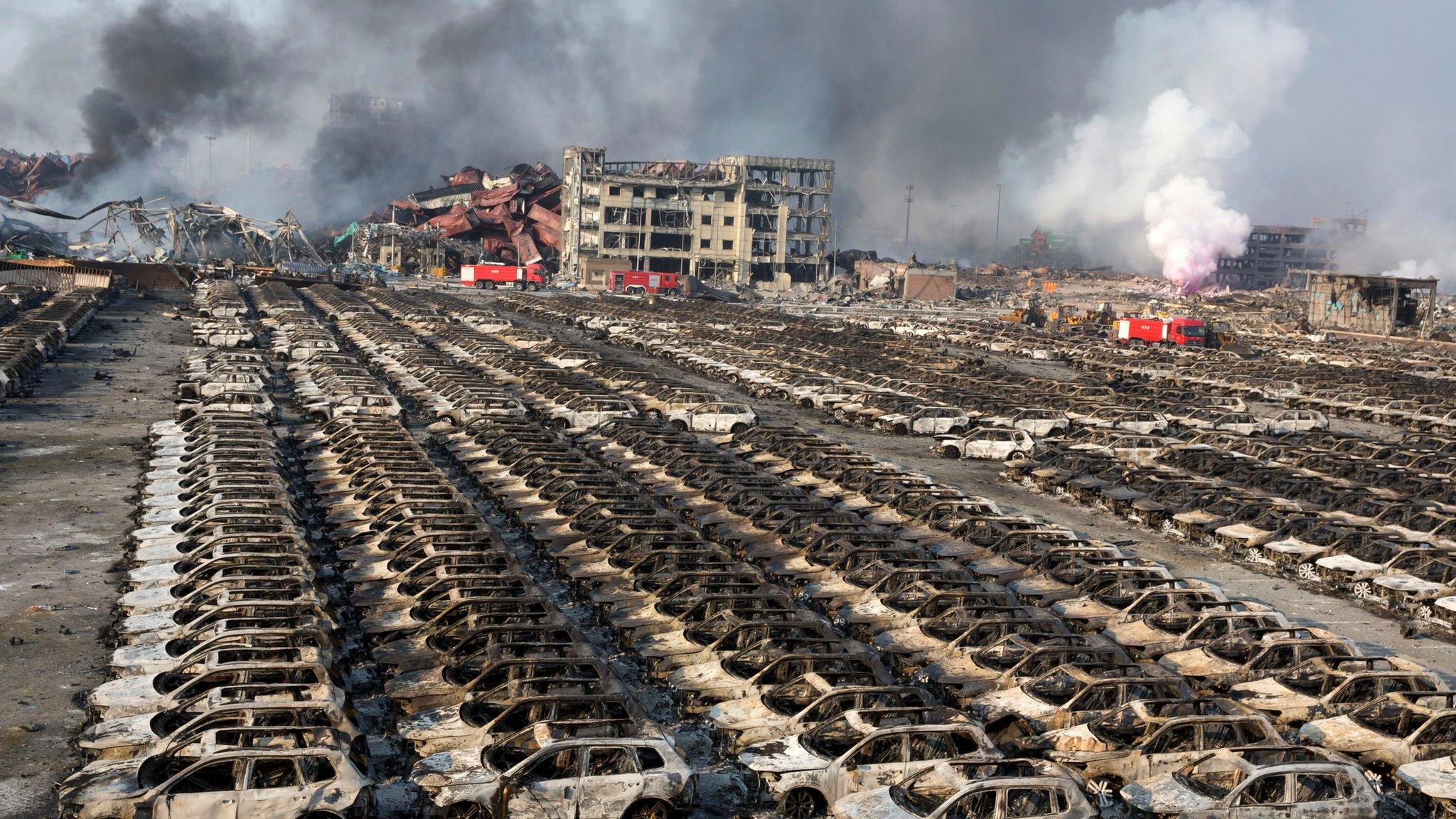
- Published29 June 2021
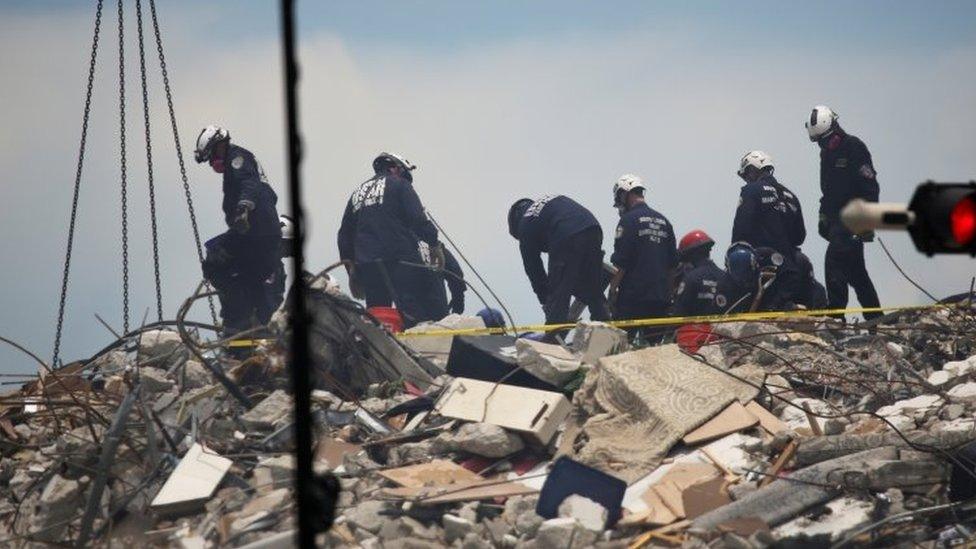
- Published20 December 2015
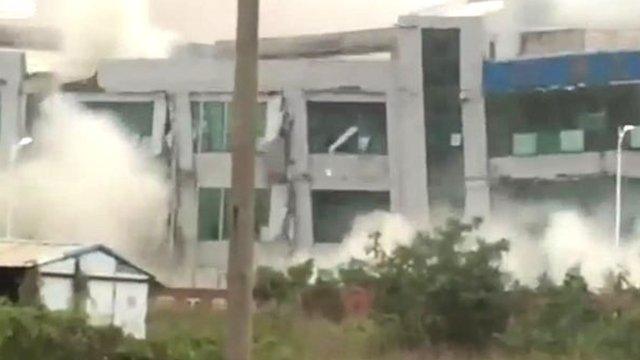
- Published16 November 2015
